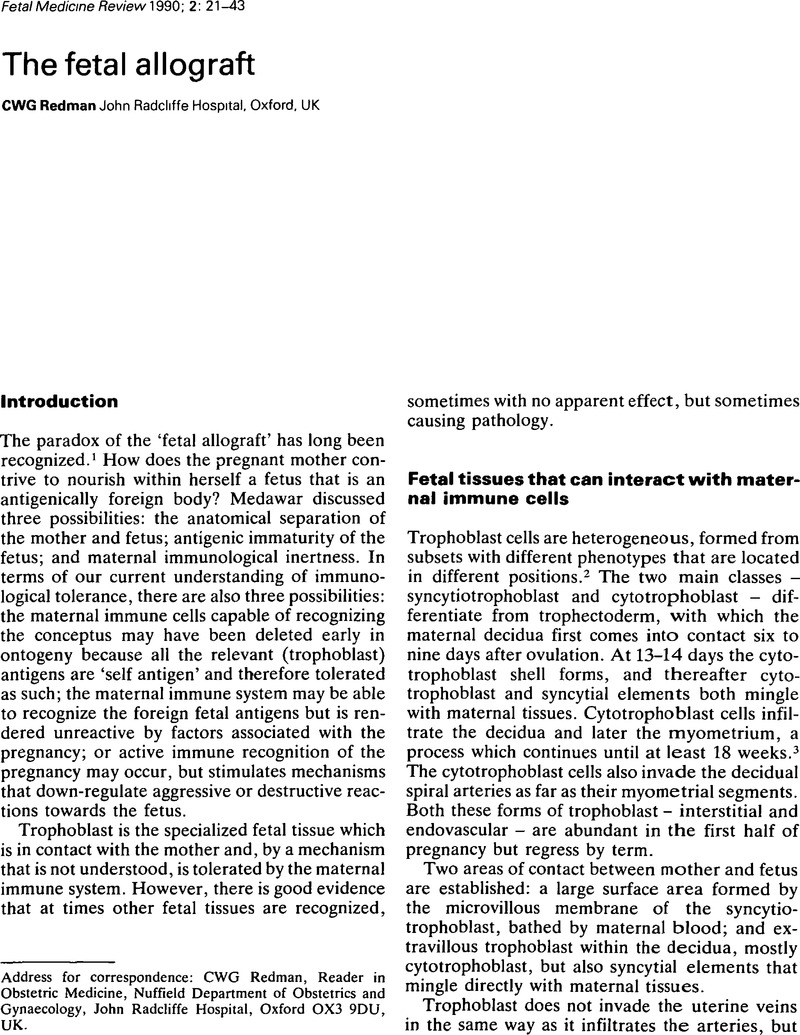Crossref Citations
This article has been cited by the following publications. This list is generated based on data provided by Crossref.
de Jong, C.L.D.
Dekker, G.A.
and
Sibai, Baha M.
1991.
The Renin-Angiotensin-Aldosterone System in Preeclampsia.
Clinics in Perinatology,
Vol. 18,
Issue. 4,
p.
683.
Bremer, Henk A
and
Wallenburg, Henk CS
1992.
Aspirin in pregnancy.
Fetal and Maternal Medicine Review,
Vol. 4,
Issue. 2,
p.
37.
Zeeman, Gerda G.
Dekker, Gustaaf A.
van Geijn, Herman P.
and
Kraayenbrink, Arjan A.
1992.
Endothelial function in normal and pre-eclamptic pregnancy: a hypothesis.
European Journal of Obstetrics & Gynecology and Reproductive Biology,
Vol. 43,
Issue. 2,
p.
113.
Redman, C.W.G.
1992.
10 Immunological aspects of pre-eclampsia.
Baillière's Clinical Obstetrics and Gynaecology,
Vol. 6,
Issue. 3,
p.
601.
Matthiesen, Leif
Berg, Göran
Ernerudh, Jan
and
Skogh, Thomas
1995.
Lymphocyte Subsets and Autoantibodies in Pregnancies Complicated by Placental Disorders.
American Journal of Reproductive Immunology,
Vol. 33,
Issue. 1,
p.
31.
1996.
Review articles.
jpme,
Vol. 24,
Issue. 2,
p.
99.
Matthiesen, Leif
Berg, Göran
Ernerudh, Jan
and
Håkansson, Leif
1996.
Lymphocyte Subsets and Mitogen Stimulation of Blood Lymphocytes in Normal Pregnancy.
American Journal of Reproductive Immunology,
Vol. 35,
Issue. 2,
p.
70.
Ekerfelt, Christina
Ernerudh, Jan
Matthiesen, Leif
and
Berg, Göran
1997.
Paternal Leukocytes Selectively Increase Secretion of IL‐4 in Peripheral Blood During Normal Pregnancies: Demonstrated by a Novel One‐Way MLC Measuring Cytokine Secretion.
American Journal of Reproductive Immunology,
Vol. 38,
Issue. 5,
p.
320.
Matthiesen, Leif
Berg, Göran
Ekerfelt, Christina
Ernerudh, Jan
and
Ernerudh, Jan
1998.
Increased Numbers of Circulating Interferon‐γ‐and Interleukin‐4‐Secreting Cells During Normal Pregnancy.
American Journal of Reproductive Immunology,
Vol. 39,
Issue. 6,
p.
362.
Redman, Christopher W.G.
Sacks, Gavin P.
and
Sargent, Ian L.
1999.
Preeclampsia: An excessive maternal inflammatory response to pregnancy.
American Journal of Obstetrics and Gynecology,
Vol. 180,
Issue. 2,
p.
499.
Eskes, Tom K.A.B.
2000.
Leon C. Chesley and hypertension in pregnant women.
European Journal of Obstetrics & Gynecology and Reproductive Biology,
Vol. 90,
Issue. 2,
p.
181.
Bolte, Antoinette C.
van Geijn, Herman P.
and
Dekker, Gustaaf A.
2001.
Pathophysiology of preeclampsia and the role of serotonin.
European Journal of Obstetrics & Gynecology and Reproductive Biology,
Vol. 95,
Issue. 1,
p.
12.
Jonsson, Yvonne
Ekerfelt, Christina
Berg, Göran
Nieminen, Katri
Sharma, Surendra
Ernerudh, Jan
and
Matthiesen, Leif
2004.
Systemic Th1/Th2 Cytokine Responses to Paternal and Vaccination Antigens in Preeclampsia: No Differences Compared with Normal Pregnancy.
American Journal of Reproductive Immunology,
Vol. 51,
Issue. 4,
p.
302.



